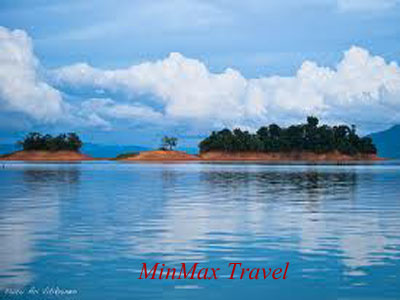Overview of Laos
Laos - a brief overview
Laos in the past
Laos's early history is a confusion of tribal wars and conquests between vassal states that eventually unified as the powerful, but sparsely populated, kingdom of Lan Xang. After holding sway in the region for about three centuries, Lan Xang gradually fell to invaders, the Siamese from the south and the Burmese from the west.
By the time the French arrived in the late 1800s, the region had reverted to a confused patchwork of Siamese, Burmese, Vietnamese and Chinese vassal states. During this period, most of Laos's temples and monuments were destroyed – those of Luang Prabang being a notable exception.
The French arrived towards the end of the 19th century, gave the country its present name, and began rolling back the boundaries of Laos through a series of treaties with Siam. For the first time, borders were agreed with neighbouring countries thereby establishing the integrity of the country. Apart from a brief period of Japanese occupation towards the end of WWII, French rule continued until 1953 when mounting problems in Vietnam led to full sovereignty for Laos.
Like its smaller neighbour, Cambodia, Laos has been a pawn in the chess games between regional and international powers. Like Vietnam, it was heavily bombed by the US in what has become known as the ‘Secret War’. During the ‘Rolling Thunder’ campaign between 1965 and 1968, American bombers dropped over seven million tonnes of high explosive on Laos and Vietnam, more than twice the amount dropped during WWII.
An intricate web of political manoeuvring, coups and counter-coups inspired by the US, China and North Vietnamese fragmented the country into several warring factions. Eventually, the Vietnamese-supported Pathet Laos took control in 1975. It is now a communist state ruled by the Lao People’s Revolutionary Party, based upon the Vietnamese Communist Party.
As in Vietnam, a period of hard-line communism was followed by a change of direction in the mid 1980s. However, the Vietnamese influence is strong, and limits Laos's freedom of development.
Laos in the present
Today, Laos is something of a backwater, a sleepy laid-back place, well behind its neighbours in development terms. It is sparsely populated: only about five million people in a country the size of Britain. Roughly half belong to one of sixty ethnic minorities, or come from other Asian countries. The main religion is Theravada Buddhism, but animism and shamanism is practiced by many ethnic minority groups.
Cambodians rely heavily upon fish protein from Ton Le Sap. Similarly, almost 90% of the protein consumed by Lao people in the rural areas is wild fish from the tributaries of the Mekong River and from the river itself. Both countries, and Vietnam, are thus threatened by dams being built further upriver.
Apart from the three main centres of Vientiane, Phonsavan and Luang Prabang, tourism infrastructure is almost non-existent. Roads are generally poor – air travel is the only practical way to visit the northern area where most of the main attractions are to be found. The south is heavily forested, and of interest mainly to visitors who attracted by virgin flora and fauna or ethnic culture, and are prepared to ‘rough it’.
Unexploded ordnance is an ongoing problem in Laos, particularly in the east near the border with Vietnam. Strenuous efforts are being made to remove it, but straying too far from the beaten track is not recommended.
If you travel to remote Laos with Haivenu, you will be accompanied by an expert local guide with the comprehensive knowledge necessary to avoid straying into risky areas.

